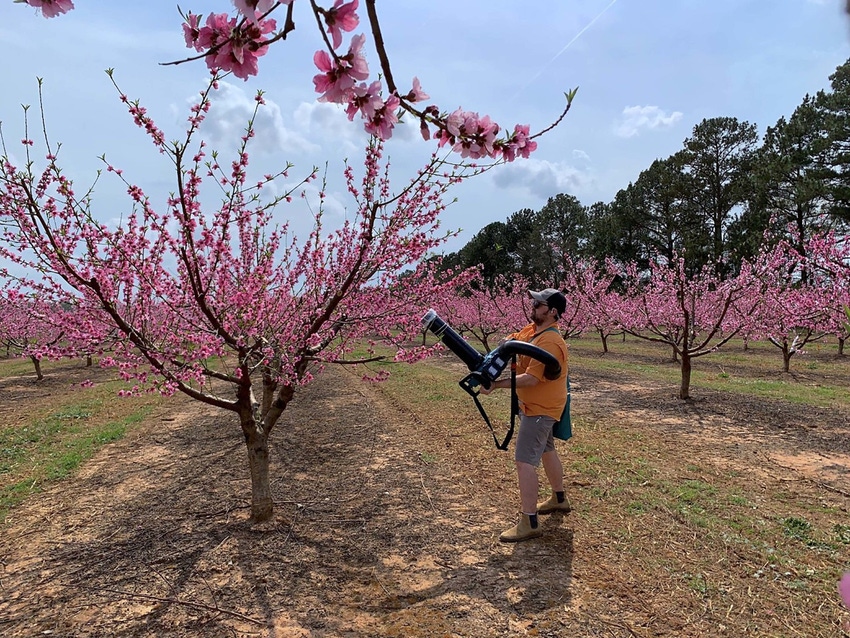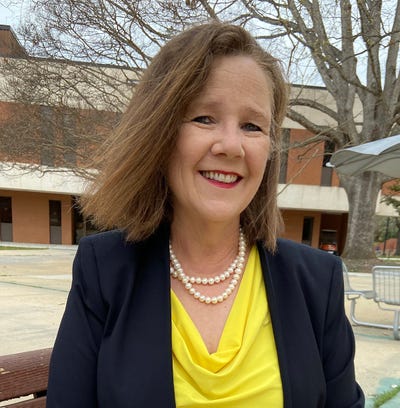
Editor’s Note: This article was written as a collaborative effort between the Clemson University and University of Georgia Colleges of Agriculture communications departments.
South Carolina and Georgia share a border, a passion for football and pride in their peaches.
With Clemson University and the University of Georgia campuses separated by a mere 70 miles, the Bulldogs and Tigers began fighting it out on the football field in 1897, with the teams set to meet for the 65th time this Saturday, Sept. 4. The game iis set for 7:30 p.m. at Bank of America Stadium in Charlotte and will be televised nationally on ABC.
The series has been highlighted by many dramatic moments that have changed the championship hopes of both teams.
In 1978, #8 Clemson traveled down I-85 to Athens only to be defeated 12-0 by the Bulldogs.
In 1981, defending national champion Georgia was led by all-time great Herschel Walker. Walker had a horrible day, including a goal-line fumble, and Clemson prevailed 13-3, thwarting Georgia’s dreams of a second straight championship and propelling the Tigers to their first national title.
Then there are the three games in four years won on last-second field goals. In 1984, Georgia’s Kevin Butler defeated the Tigers by kicking a 60-yarder. In 1986, Clemson’s David Treadwell kicked the game-winner with 4 seconds to play, defeating Georgia 31-28. The very next year, Treadwell reprised his feat and booted another game-winner for a 21-20 win.
For more than a century, Georgia has dubbed itself the “Peach State,” recognizing its history of growing the stone fruit. Meanwhile, South Carolina produces more peaches than any other state, other than California, and anyone who has passed by Gaffney, South Carolina, on I-85, has seen The Peachoid, a glorious 135-foot water tower in the shape of a giant peach.
UGA, Clemson peach researchers work together
Despite their pigskin and peach pride differences, UGA and Clemson researchers have been working together for many years to help peach producers overcome challenges in growing the iconic and delicious fruit.
Similar growing conditions in the two states create an agricultural playing field where Clemson and UGA peach researchers plan and coordinate defense strategies against diseases, pests and climate variations. Common insect pests include San Jose scale, plum curculio and peachtree borers. To help combat these culprits, the two universities appointed a joint peach entomologist.
Brett Blaauw joined the faculty as an assistant professor at both Clemson and UGA and as a member of both universities’ peach teams in 2016. His research focuses on integrating insect behavior and ecology to effectively and sustainably manage insect pests in Southeastern peach orchards.
“A lot of issues peach producers have in terms of insects span both states — and often the work we do in one state affects growers in both states,” Blaauw said. “In a lot of ways, it just makes sense to have someone in this joint position.”
Blaauw works closely with pathologists and horticulturists from both colleges, as well as UGA and Clemson Cooperative Extension Service agents and peach producers in both states. This season, Blaauw has collaborated with Clemson plant pathologist Guido Schnabel and horticulturist Juan Carlos Melgar to investigate how various mulching techniques can impact soil health and the subsequent impacts on tree health, trees diseases and insect pests. Blaauw and Schnabel also researched how using horticultural oil to manage San Jose scale can be incorporated into the current disease management program for peaches.
“Many issues in peach production come from growing on the same soil over and over,” Melgar said. “In states where there is a long history of growing peaches, it is becoming harder and harder to grow peaches because of insect and disease issues attacking the tree and the fruit.”
The thought is a lot of the soils where producers have been growing peaches for years can harbor bacteria, fungi and nematodes that can stress the trees. The researchers are looking for ways to mitigate this by adding different mulches to create healthier soils with the goal of “making healthier trees.”
'Good Microbes'
One goal of the study is to learn whether improving soil health can support “good” microbes, nematodes and bacteria that can attack the larvae of insect pests, such as peach tree borers and plum curculio, whose larvae attack tree roots. Other objectives focus on assessing the influence of improving soil organic matter; soil, water and nutrient availability, and fruit and tree diseases.
This research benefits peach growers throughout the Southeast, as many peach producers grow many of the same varieties, depending on climate and location, Blaauw added.
UGA Extension fruit disease specialist Phil Brannen and Schnabel communicate frequently, developing research projects based on problems they are seeing.
“We were losing a lot of peach fruit to fungal disease and, working with Guido, we were able to determine that brown rot in Georgia has significant resistance to a certain class of fungicides,” Brannen said. “We were then able to develop spray programs that have been very effective in controlling brown rot. Brown rot has gone from a serious problem across Georgia production to not much of a problem at all.”
When brown rot reached South Carolina orchards, there was already a plan in place to combat it.
“My collaborations with Dr. Brannen have been critical in many aspects of Integrated Pest management (IPM) tool development,” Schnabel said. “From designing IPM strategies to developing smartphone apps that bring critical information to the fingertips of Georgia and South Carolina growers. It has been a fantastic team effort over the past 20 years.”
Combating bacterial spot disease
Researchers from the two universities also are collaborating in an effort to combat Xap, the bacterium that causes the bacterial spot disease. This USDA-NIFA funded study led by Clemson plant bacteriologist Hehe Wang, includes Schnabel and Clemson researcher Jose Payero, as well as Brannen and researchers from other institutions. Together, they are working to determine how to manage this disease effectively and build a disease forecasting system for future growers.
“Annual losses of more than $20 million are estimated during years when the disease is heavy in South Carolina and Georgia,” Wang said. “This disease is difficult to control and once it makes its way to an orchard, it’s there for the life of that orchard. It’s a constant battle.”
Other peach collaborations between the universities include UGA peach horticulturist Dario Chavez, who is working with Clemson researchers on the use of plant growth regulators and rootstock trials to improve economic and environmental sustainability.
Chavez and Brannen also are collaborating with Clemson peach breeder and geneticist Ksenija Gasic in a USDA-NIFA funded battle against Armillaria root rot, a soilborne disease that can remain dormant in the soil for many years, making infested land unsuitable for susceptible host plants for many years.
Although they have borne witness to good-natured ribbing by growers on both sides of the state line — with both Georgia and South Carolina claiming fruit superiority — both Blaauw and Brannen agree on one fact.
100 times better than California peaches
“Here’s the easy part,” Brannen said. “Both Georgia peaches and South Carolina peaches are 10 times better — maybe 100 times better — than California peaches, and that’s not even a lie.”
“Honestly, both are very good, but they are all better than California peaches,” Blaauw agrees, laughing.
When it comes to football, Brannen roots for UGA and Blaauw, a Midwest native, cheers for Michigan State. But their work in peaches will sustain the friendly rivalry between peach growers in Georgia and South Carolina for many growing seasons to come.
Source: Clemson University, which is solely responsible for the information provided, and wholly owns the information. Informa Business Media and all its subsidiaries are not responsible for any of the content contained in this information asset.
About the Author(s)
You May Also Like






